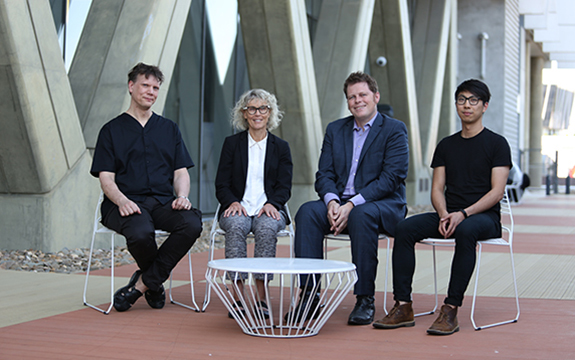Architecture joins a Future Ready School of Design

In Summary
- Swinburne has opened its doors to Bachelor of Design (Architecture) students
- Opportunities to explore urgent societal issues in design and health
- Bachelor of Engineering (Architecture) also starting this year
Swinburne has opened its doors to Bachelor of Design (Architecture) students. It’s an exciting time for an exciting program.
“At Swinburne we are looking to educate graduates who are ‘Future Ready’,” says Professor Jane Burry, Dean of Design.
“In architecture, this means understanding the fundamental changes unfolding in the profession and the industry. The new students will not only have the learning environment to develop exceptional design skills and cutting-edge ability with digital workflow, but an openness to the changes occurring in practice,” Professor Burry says.
“As a university of technology, we have a technological edge. Our students will study the way buildings are procured, practice is managed, or the ability to assimilate new techniques and technologies as these come on stream,” she adds.
Swinburne has a strong focus on health, well-being and the environment. Students coming into the Faculty of Health Arts and Design have great opportunities to explore urgent societal issues at the nexus of design and health.
They will also learn new ways to simulate and incorporate environmental phenomena in their design, looking to a carbon free future and a healthy environment. Architectural and spatial design are fundamental to human well-being, to all their social, environmental and aesthetic experiences.
A new academic team, Professor of Architecture Mark Taylor, Professor of Urban Design Marcus White, Discipline Leader of Architecture and Associate Professor John Sadar, Lecturer in Architecture Dr Canhui Chen and Industry Fellow, Architecture Drew Williamson are leading the Bachelor of Design (Architecture) program.
The new program looks at a whole-of-practice approach, preparing students for employment and business. Students of architecture can integrate other expertise into their undergraduate degree through available advanced minors to widen their opportunities, whether in other areas of design, such as web development, communication design, innovation and design, industrial design and animation; or business areas like entrepreneurship and innovation, management and marketing.
The new Bachelor of Engineering (Architecture) is also starting this year. Architectural engineering is an essential synthesis of fundamental engineering principles and skills for building with a creative understanding of architecture.
From 2019, there will be opportunities for architecture and architectural engineering students to work together on projects, preparing them for collaboration in practice.
“Establishing a new architectural design program within an established school of design provides the opportunity to take a design-centric, but a very contemporary approach to architectural education,” explains Burry.
Swinburne has reached out to leading practitioners in architecture, engineering and urban design in Melbourne and internationally, for input into the format of the new courses.
Students will be encouraged to include international experience in their studies, by participating in study tours, international design studios with other leading architecture and design schools or an international exchange with one of Swinburne’s international exchange partners.

